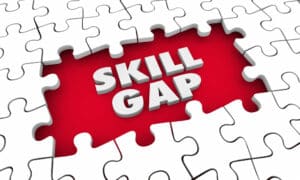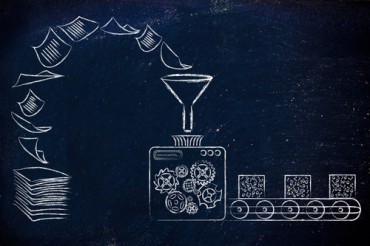
Organizations that fail to focus on training programs and tools to reduce costly skills gaps in their workforces will continue to fall farther behind.
It’s true that strong storms strike all the ships in a harbor with the same force. However, well-made ships—well-crafted from bow to stern with all the right tools on deck—are far more likely to weather even the strongest winds and the highest waves with far less damage than ships that haven’t had the same care.
Customer service-oriented organizations can learn more from this metaphor than you might think. While organizations can’t control an imminent recession or make themselves immune to its effects, what leaders can control is their response. Rising inflation caused overall service costs to rise 7% in comparison to the previous year. While this is a tough reality for service teams across the board, these rising costs are significantly more challenging for organizations that haven’t made the necessary investments to improve the skills of all their workers. The organizations that will find success, however, are those that narrow the knowledge gaps between their top-performing and bottom-performing workers.
New tools like sophisticated, AI-driven software platforms are playing an important role in ensuring that knowledge and experience is shared equally across teams, helping to close the skills gaps and steer the ship in the right direction.
See also: Today’s Tech Jobs: Skills More Important Than Knowledge
Cost of the skills gap
Our 2023 Service Intelligence Benchmark Report, based on the analysis of more than 16.2 million work orders from 113 service organizations, found that bottom-performing technicians cost their organizations as much as 67% more than top performers.
The expense of this gap is increasingly troublesome, given the current state of the economy. Inflationary factors put growing pressure on leaders of customer-service teams to keep a tight rein on expenses.
The report found that upskilling average-performing employees closer to top performers through the use of AI-powered service intelligence tools will reduce service costs by 13%. And, if the entire staff had the skills and the knowledge to perform like the top 20% of the workforce, service costs could be reduced by 21%.
At the top-performing service organizations, the report found a 16% skills gap between the organization’s heroes (top performers) and challengers (bottom performers). The poorest-performing teams, meanwhile, are experiencing a 164% skills gap, a significant increase from last year’s 104%.
Customer-service experts observe that lower-performing organizations fail to invest in the tools, resources, and people that would allow them to keep pace with the best organizations. As a result, the gap is continuing to grow, and the current economic climate will only make things more costly.
See also: Successful Business Adoption of AI Requires Soft Skills
Consequences of the skills gap
The consequences of the skills gap are clear. Lower-skilled workers take longer to resolve issues, they often need to make multiple trips to a customer’s location to get the job done right, and they’re more likely to expense unnecessary parts.
As a result, competence across an entire service team is ever more critical. Customers recognize the difference between well-skilled service technicians and poor performers. They want consistent, timely service, the most important element in the development of long-term customer relationships.
Some organizations may not fully appreciate the impact of consistent skills across their workforces because they continue to rely on First-Time Fix Rates as their primary measurement of success.
First-Time Fix Rates (a standard field service metric indicating how often a technician can fix issues on the first visit) are improving — up to 76.5%, compared with 74.2% a year earlier. But, while leaders of service teams would expect this to drive service costs lower, the economic benefits of better First-Time Fix Rates are being eroded by increases in other costs, including parts consumption.
In other respects, some organizations that use a short First-Time Fix Rate — say, no callbacks in seven days or 14 days — are generating false positives. Measurement of First-Time Fix Rates in a 30-day window is significantly more likely to reflect the successful completion of a job.
In contrast, organizations with the healthiest field service operations generally rely on more holistic metrics such as “Cost per Resolution.” This metric considers the expenses associated with multiple work orders, parts requested, and the number of service calls to resolve the issue. While Cost per Resolution provides greater visibility compared to First Time Fix Rate, no single KPI by itself provides a good picture of customer satisfaction. Rather, the best field-service leaders need to rely on a combination of KPIs to track the performance of their teams. New tools powered by artificial intelligence deliver sophisticated analyses that provide the visibility into workforce performance that leaders need.
Closing the gap
Leaders of service teams cannot afford to ignore the pressures of rising costs in this inflationary environment. While these factors are out of the control of service leaders, worker performance and customer experiences can be managed and improved during this time. Organizations that fail to invest in the right tools and fail to focus on training programs to reduce costly skills gaps in their workforces will continue to fall farther behind. In fact, many of them face the likelihood that they’ll lose so much ground that they simply won’t be around in five years. The stakes have never been higher.
The economic storms are rising, but the best leaders are making preparations to sail toward a brighter, more resilient future. All that’s needed are the right tools and the right crew.






























